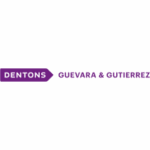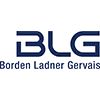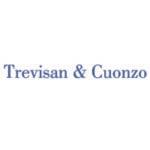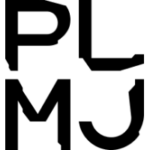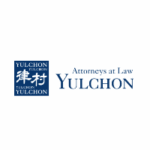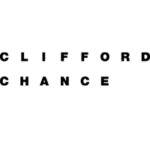-
What types of conduct and causes of action can be relied upon as the basis of a competition damages claim?
Any type of conduct infringing Articles 101 and/or 102 of the Treaty on the functioning of the European Union (“TFEU”) and/or Articles 6 and/or 24 of the Dutch competition act (‘Mededingingswet’, “Mw”)) can be relied upon as the basis of a competition damages claim. Infringements of competition law constitute a tort under Dutch law (Article 6:162 of the of the Dutch Civil Code (‘Burgerlijk Wetboek’, “BW”)), allowing injured parties to claim damages for harm suffered from such infringements.
-
What is required (e.g. in terms of procedural formalities and standard of pleading) in order to commence a competition damages claim?
In order to commence competition litigation before the Dutch courts, several formalities need to be passed. Although it is in principle permitted to sue someone without prior notice (‘rauwelijks dagvaarden’), it is custom to send a demand or cease-and-desist letter to the other party before commencing proceedings, informing them of the claim and potential proceedings and setting a deadline within which the party is expected to reply before commencing proceedings. Whilst commencing litigation without prior notice is thus legal, it can affect the order for costs. The court may, for example, decide that each party bears its own expenses or modify the cost order to the detriment of the claimant who sued without prior notice – the rationale being that the defendant has had to make legal costs without being able to solve the matter amicably.
The writ of summons needs to be served on the defendant(s) by a bailiff, requesting the defendant(s) to appear before the court at a certain docket date taking into account the relevant summons period (see question 16). The writ of summons then needs to be filed at the court on that docket date, too, including the exhibits to the writ of summons (if any). The writ of summons needs to contain several elements, such as (inter alia) the domicile of the claimant in the Netherlands, the claim and the grounds on which it is based, identification of the court seised including the address of the courthouse where the hearing will take place, the date on which the defendant is summoned to appear, and the requirement that the defendant must appear through legal counsel (Article 111 Dutch Code of Civil Procedure (‘Wetboek van Burgerlijke rechtsvordering’, “Rv”)), except for proceedings before the subdistrict court in case of claims with a value of up to EUR 25.000 (‘kantonrechter’) (Article 79 Rv).
Furthermore, the court fees (‘griffierechten’) need to be paid. The claimant is required to pay the court fees within four weeks following the date on which the writ of summons is filed before the court; the defendant is obliged to do so within four weeks following the date on which it is summoned to appear before the court (Article 3 Court Fees (Civil Cases) Act).
-
What remedies are available to claimants in competition damages claims?
Claimants are, in principle, not restricted to a closed list of remedies as such. The following kinds of remedies are available to claimants in competition law cases. Foremost, claimants can claim compensation for the damages suffered as a result of anticompetitive conduct. This includes the actual loss as well as the loss of profit, and interest from the moment the damage occurred. Victims of competition law infringements are entitled to compensation but this may not lead to overcompensation; hence, there is no such thing as ‘triple damages’ in the Netherlands.
Furthermore, claimants can – either together with obtaining damages or separately – request a declaratory judgment from the court confirming that the conduct in question is anticompetitive and qualifies as a tort/unlawful act, and that the defendant is (jointly and severally) liable for the damages in that respect. It is also possible to order a declaratory relief on (joint and several) liability and to also request the court to refer the case to follow-up damages quantification proceedings (‘schadestaatprocedure’) (see question 15).
Similarly, claimants can request a court order or injunction against an (alleged) infringer of competition law, for instance requiring the latter to cease its conduct.
-
What is the measure of damages? To what extent is joint and several liability recognised in competition damages claims? Are there any exceptions (e.g. for leniency applicants)?
In principle, all undertakings are (jointly and severally) liable for their (joint) anticompetitive conduct pursuant to Article 6:193m(1) BW. This means claimants can claim the full amount of damages from any one of the undertakings involved in the infringement.
Regarding leniency applicants, Article 6:193m(4) BW stipulates that, by way of derogation from the joint and several liability as laid down in Article 6:193m(1) BW, an immunity recipient shall be jointly and severally liable only to its direct and indirect customers and suppliers for the harm caused by the infringement, unless full compensation for that harm cannot be obtained from the other undertakings involved in the infringement. Article 6:193n BW subsequently stipulates that the amount of the contribution to the compensation of the harm suffered by the immunity recipient is in principle limited to the amount of damages incurred by its own customers/suppliers. This, thus, forms a limitation on the principle of joint and several liability for competition law infringements for leniency applicants.
-
What are the relevant limitation periods for competition damages claims? How can they be suspended or interrupted?
The limitation period for damages claims is five years (pursuant to Article 6:193s BW). The limitation period for damages claims in the Netherlands was already set at five years before the entry into force of Directive 2014/104/EU (“Damages Directive”), harmonising the limitation period to five years throughout the European Union (“EU”). The limitation period begins to run after the day following the date on which the infringement ceased and the injured party became aware, or could reasonably be expected to have become aware, of the infringement, the harm suffered as a result, and the person liable for that harm. The CJEU held in Heureka Group (case C-605/21) that knowledge of the information necessary for bringing an action in principle coincides with the date of publication in the Official Journal of the summary of the European Commission’s decision, irrespective of whether that decision has not yet become final. Injured parties can nevertheless rely on such a non-final decision as support for their damages claims.
The limitation period can be interrupted in several ways:
- by initiating legal proceedings or taking another act of legal recourse (Article 3:316 BW), e.g., by commencing damages litigation (by way of serving a writ of summons);
- by a written demand or notice from the creditor (Article 3:317(1) BW), in which it reserves its right to compensation; and
- by acknowledgment of the debt by the debtor (Article 3:318 BW), e.g., by (partial) payment of the damages or by a letter confirming the liability/damages.
Article 6:193t BW – the implementation of Article 10(3) Damages Directive – further stipulates that acts performed by a competition authority in the context of an investigation or procedure relating to the infringement of competition law to which the legal claim pertains, constitutes a ground for extending the limitation period. The extension commences the day after the expiry of the limitation period. The duration of the extension is equal to the time required to establish a final infringement decision or to otherwise terminate the procedure, plus one year. It furthermore states that out-of-court dispute resolution procedures also constitute a ground for extending the limitation period between the parties involved.
-
Which local courts and/or tribunals deal with competition damages claims?
There is no court specifically appointed to deal with competition law cases in the Netherlands. All civil district courts and appeals courts as well as the Supreme Court deal with competition law matters, including competition damages claims. Furthermore, the Netherlands Commercial Court (‘NCC’) was introduced in 2019, before which proceedings are (by default) in English. The NCC is specifically developed for efficient case handling in complex proceedings, including competition law matters. Judgments rendered by the NCC – or the appellate body, NCC Appeals – are enforceable throughout the entire EU in the same manner as decisions of other national courts.
-
How does the court determine whether it has jurisdiction over a competition damages claim?
How Dutch courts determine their jurisdiction over a competition damages claims depends on the place of residence of the parties involved. If the case concerns solely Dutch and/or non-EU defendants, the Dutch jurisdictional rules apply (Article 1-14 Rv). Insofar the defendants are based within the EU, Brussels I-bis Regulation will be applied. With respect to Swiss defendants, the Lugano Convention/EVEX II applies.
As for all these legal frameworks, the main jurisdictional rule stipulates that courts of the defendant’s place of domicile have jurisdiction. There are alternative grounds on which jurisdiction can be assumed. For competition damages claims, the most relevant alternative grounds are usually based on (i) the place where the harmful event occurred or may occur (i.e., both the Erfolgsort and the Handlungsort – Article 6(e) Rv, Article 7(2) Brussels I-bis Regulation and Article 5(3) Lugano Convention) or (ii) in case of a plurality of defendants, on the place where one of the defendants is based (the so-called ‘anchor defendant’ rule – Article 7(1) Rv, Article 8(1) Brussels I-bis Regulation and Article 6(1) Lugano Convention).
Both of these alternative jurisdictional grounds are the subject of debate in Dutch competition damages claims. The Dutch courts (Amsterdam Appeals Court and the Dutch Supreme Court) have referred multiple preliminary questions on the interpretation and relevance of substantive competition law (such as the ‘concept of undertaking’) with respect to the assessment of jurisdiction pursuant to international private law, such as the Brussels I-bis Regulation (see for instance case C‑393/23, AB and Heineken/MTB; see also the pending preliminary references in joined cases C‑672/23 and C‑673/23).
-
How does the court determine what law will apply to the competition damages claim?
With respect to non-contractual unlawful conduct giving rise to damages, the Dutch courts generally rely on either the Tort Conflict of Laws Act (‘Wet Conflictenrecht Onrechtmatige Daad’, “WCOD”) or the Rome II Regulation, depending on the date on which the unlawful conduct causing the damage occurred. The WCOD applies to harmful events that occurred before 11 January 2009, whereas the Rome II Regulation applies to such events that occurred on or after 11 January 2009. Which of these regimes applies (either exclusively or simultaneously) to single and continuous infringements that started before the entry into force of the Rome II Regulation but lasted until after its entry into force, is still subject of debate.
The main rule under both the WCOD (Article 3) and the Rome II Regulation (Article 4) is that the law applicable to a non-contractual obligation arising out of a tort shall be the law of the country in which the damage occurs. More particularly, pursuant to Article 4 WCOD, non-contractual obligations resulting from competition law infringements are governed by the law of the country in whose territory the anticompetitive conduct affects the competitive relations (i.e., the affected market).
A similar rule is contained in Article 6 Rome II Regulation, which stipulates that the law applicable to a non-contractual obligation arising out of a restriction of competition shall be the law of the country where the market is, or is likely to be, affected. Unlike the WCOD, Article 6 Rome II Regulation actually contains provisions regulating the applicable law in case the market is (or is likely to be) affected in more than one country (Article 6(3)(b)). In that case, the claimant may choose to base their claim on the law of the court seised.
The Appeals Court of Amsterdam held that the applicable law in competition damages claims following on cross-border competition infringements is to be determined on the basis of Article 6(3)(b) Rome II Regulation. This provision allows for a choice of law for the claimant in case multiple affected markets can be identified. The Appeals Court of Amsterdam ruled, essentially, that the affected markets were located in different States. Consequently, it concluded that – since the market is, or is likely to be, affected in more than one country – the claimant seeking compensation for damage who sues in the court of the domicile of the defendant, may choose to base his or her claim on the law of the court seised pursuant to Article 6(3)(b) Rome II – i.e. Dutch law. The Amsterdam Appeals Court draws the same conclusion in case the WCOD applies, as that legal act contained a lacuna when dealing with cross-border (competition) damages claims and that lacuna is filled by using Article 6(3)(b) Rome II Regulation (see Appeals Court Amsterdam, ECLI:NL:GHAMS:2021:1940).
This interpretation by the Appeals Court of Amsterdam was recently appealed before the Dutch Supreme Court, which decided to refer preliminary questions to the CJEU on (inter alia) this matter on 20 June 2025.
-
What is the applicable standard of proof?
Under Dutch civil procedural law, Articles 149 and 150 Rv govern the rules regarding the burden of proof and the obligation to furnish facts and substantiate claims.
Article 149 Rv entails that facts which are not disputed by the opposing party are deemed to be established and do not require further proof. As such, it simplifies the evidentiary process by focusing only on contested facts. However, the court retains the discretion to require (further) evidence for certain facts if it deems this necessary for the proper administration of justice.
Article 150 Rv outlines the general rule for the allocation of the burden of proof. It states that the party invoking the legal consequences of a fact bears the burden of proving that fact. Read in conjunction with Article 149 Rv, this essentially boils down to the following structure: the claimant asserts claims and, upon reasoned challenge by the defendant, has to prove those challenged claims.
Exceptions to this rule may arise from specific statutory provisions or the principles of reasonableness and fairness, which can shift the burden of proof in certain circumstances.
There are also rules on (assumptions) on proof specific to competition law, such as the (rebuttable) presumption that a parent company who holds almost all the shares in its subsidiary has or can exercise decisive control over that subsidiary. Another rule affecting the general evidentiary rules can be found in Article 6:193l BW, which is the implementation of Article 17(2) Damages Directive and stipulates that cartels are presumed to cause harm and that defendants are able to rebut that presumption.
Lastly, Article 22 Rv allows the court to ‘intervene’ in the regular burden of proof. Pursuant to Article 22 Rv, the court may order one or both parties to elaborate on specific claims or to submit documents or data relevant to the case. In a case concerning Dieselgate/emissions fraud, the Amsterdam District Court recently ruled that, if the fact that the burden of proof lies with a party would render it impossible or excessively difficult for that party to provide the requested proof, particularly because the evidence concerns information not available to that party, the national judge must, in order to ensure compliance with the principle of effectiveness, make use of all procedural means available to him under national law including the ordering of necessary measures of inquiry, such as the production of a deed or document by one of the parties or by a third party. Accordingly, it ordered the defendants in that case to provide information/data – which lies exclusively within their respective domains and which would be impossible or difficult to access for the claimants – to ascertain whether manipulation instruments were included in certain cars (ECLI:NL:RBAMS:2025:1124).
See question 23 for more detailed information on the rules of evidence in the Dutch legal order.
-
To what extent are local courts bound by the infringement decisions of (domestic or foreign) competition authorities?
National courts are bound by the decisions of the European Commission, irrespective of whether decisions are under appeal before the European courts. As Article 16(1) of Regulation 1/2003 stipulates, when national courts rule on matters regarding Article 101/102 TFEU, they cannot take decisions running counter to the decision adopted by the European Commission. While the operative part of the decision is binding, courts have discretion as to the evidentiary value they give to the body of the decision.
National courts are also bound by infringement decisions of the Dutch competition authority (the Authority for Consumers and Markets (‘Autoriteit Consument & Markt’, “ACM”)) pursuant to Article 161a Rv read in conjunction with Article 6:193k BW. This follows from Article 9(1) Damages Directive, which stipulates that Member States shall ensure that an infringement of competition law found by a final decision of a national competition authority or by a review court is deemed to be irrefutably established for the purposes of an action for damages brought before their national courts under Article 101 or 102 TFEU or under national competition law.
Regarding infringement decisions of foreign (EU) competition authorities, the national courts are bound to a lesser extent. Pursuant to Article 9(2) Damages Directive, final decisions of a competition authority of another Member State may, in accordance with national law, be presented before their national courts as at least prima facie evidence that an infringement of competition law has occurred and, as appropriate, may be assessed along with any other evidence adduced by the parties.
-
To what extent can a private damages action proceed while related public enforcement action is pending? Is there a procedure permitting enforcers to stay a private action while the public enforcement action is pending?
Private damages claims can in principle proceed regardless of any parallel public enforcement on the (same) matter. A private damages claim can thus proceed concurrently with an investigation by a competition authority. However, national courts can decide to stay the proceedings pending an investigation by a competition authority either ex officio or upon request by one of the parties involved, but they are not obliged to do so.
There is no procedure permitting enforcers to stay civil proceedings while public enforcement is pending/ongoing.
-
What, if any, mechanisms are available to aggregate competition damages claims (e.g. class actions, assignment/claims vehicles, or consolidation of claims through case management)? What, if any, threshold criteria have to be met?
There are numerous ways to aggregate or otherwise bundle competition damages claims.
First, there is the possibility of a class action under the WAMCA regime (‘Wet afwikkeling massaschade in collectieve acties’, Article 3:305a BW). The WAMCA is based on an opt-out system for Dutch residents belonging to the determination of the class. Beneficiaries residing outside the Netherlands have to actively opt-in to the class (unless the court expressly decides that an opt-out regime applies). All collective actions filed under the WAMCA are to be registered in a central register with open access. In case of competing class actions under the WAMCA, the court will ultimately appoint one exclusive class representative. That organisation will then represent the entire class. The WAMCA imposes a strict set of admissibility requirements on the representative organisation, which are tested by the court. These relate inter alia to the funding of the representative organisation and the claim as well as the governance of the organisation.
It should be noted that the WAMCA entered into force on 1 January 2020. Its predecessor – Article 3:305a (old) BW – still applies where the class action concerns harmful events that took place prior to 15 November 2016. A debate is currently ongoing on whether the (new) WAMCA-regime applies in its entirety to a series of events which started prior to 15 November 2016 but yet still continued after that period.
Second, another possibility for collective settlement can be found in Articles 7:907-910 BW (the so-called WCAM). Pursuant to that regime, the appeals court of Amsterdam can (exclusively) declare a settlement agreement regarding mass damages, concluded between an interest organisation and the liable party or parties, binding for an entire group of affected individuals. This would prevent the need for individual proceedings (Article 7:907 BW and Article 1013 Rv).
Third, claims can be bundled through assignment (Article 3:94 BW). For the assignment of a claim, for instance to a claim vehicle or (other) interest organisation, it is required that the transfer is based on a valid title by a person authorised to dispose of the claim (the transferor) to the transferee. The transfer takes place by way of a deed. Article 3:94(3) BW allows for the possibility of silent cession, meaning that the debtor is not notified of the assignment.
Fourth, claims can be transferred and bundled by way of a power of attorney (Article 3:60 BW). Unlike assignment, the claim itself is not transferred. Rather, the interest organisation is entitled to act on behalf of the initial claimant in claiming damages from the debtor.
Fifth, claims can be bundled through a mandate (‘lastgeving’) pursuant to Article 7:414-7:424 BW. Essentially, this is a contractual arrangement whereby one party, the agent (‘lasthebber’), undertakes to perform one or more legal acts on behalf of and for the account of another party, the principal (‘lastgever’).
Generally, in practice, bundling claims in B2B cases, where multiple professional parties have suffered damages from anticompetitive conduct, is usually done through assignment, power of attorney or a mandate. In cases where consumers are harmed, the WAMCA (or WCAM) is usually used.
Lastly, regarding case management, in case of more complex and vast/sizeable cases, the courts often schedule a pre-trail hearing in which agreements are made between the parties and the court inter alia on timing and extensions. The reason for this is to make the procedure more efficient and pragmatic.
See also question 22 on the ways through which collective settlements can be reached.
-
Are there any defences (e.g. pass on) which are unique to competition damages cases? Which party bears the burden of proof?
There are several defences unique to competition law. The pass-on defence is the most common. Article 6:193p BW specifically provides for the ability of a defendant to claim that a party alleging to have suffered damages has passed on the overcharge. In line with Article 149/150 Rv, as described above (Question 8), the burden of proof rests, in principle, on the party invoking the defence. Article 6:193q BW – implementing Article 14(2) Damages Directive – establishes a rebuttable presumption of passing-on for the benefit of the indirect customers of an infringer. After all, the indirect customers themselves did not purchase directly from the infringer, which makes their evidentiary position more difficult. Therefore, the burden of proof is reduced for the indirect customer. Article 6:193q BW specifies that an indirect customer is presumed to have proven the pass-on of overcharges, provided that they demonstrate that:
- the infringer has committed an infringement of competition law;
- the infringement resulted in additional costs for the direct customer of the infringer, and;
- the indirect customer acquired the goods or services that were the object of the infringement, or goods or services into which those were incorporated or that were derived from them.
Aside from the pass-on defence, other defences can also be used in competition law cases. One can think of challenging the alleged damage despite the existence of an infringement, for instance by claiming that the (relevant) counterfactual scenario is different than asserted by the claimants. Another defence, relating to the quantification of damages, could be the argument that there are no damages since the market is characterised by a ‘zero-sum-game’ – i.e., one person’s gain is exactly balanced by another person’s loss. The total value of the outcomes then adds up to zero meaning that there are no damages suffered despite the existence of a competition law infringement.
-
Is expert evidence permitted in competition litigation, and, if so, how is it used? Is the expert appointed by the court or the parties and what duties do they owe?
Expert evidence is permitted in competition litigation. In almost all cases, competition damages claims are supported by an economic report setting out the market functioning and/or harm suffered as a result of the anticompetitive conduct in question.
Economic expert reports are generally submitted by the parties involved without the court appointing experts. This is most often the claimant, but it is not unlikely that a defendant submits a counter report. The court then studies both reports and draws its conclusions.
Although uncommon in competition litigation – where oftentimes parties submit economic reports themselves proactively – in some cases the court appoints (economic) experts itself pursuant to Article 186-192 Rv. This could be the case if, for instance, the court finds that it cannot draw the proper conclusions from the diverging economic reports submitted before it and needs a third, independent report to fill in the remaining gaps.
-
Describe the trial process. Who is the decision-maker at trial? How is evidence dealt with? Is it written or oral, and what are the rules on cross-examination?
Generally speaking, the trial process is as follows.
- Cases are brought before the court by way of a writ of summons.
- The defendant(s) can reply to the writ of summons by wat of a statement of defence, after which a hearing is scheduled.
- If the defendant(s) raise(s) incidents in their reply, for instance a motion of lack of jurisdiction – which are dealt with before the substantive aspects of the case (‘voor alle weren’) – the claimants can reply to those in writing, after which (most often) a separate hearing is scheduled in the incident proceedings.
- During hearings, the claimant (in incident proceedings) is first allowed to speak, then the defendant. Subsequently, both parties are allowed a response on the first stage of the debate. Afterwards, but also during the speaking time, the courts can ask questions to the parties. Under the new evidence rules that entered into force as of 1 January 2025, it is also possible to bring (expert) witnesses to the hearing (see question 23).
- The court will then render its judgment (in incident or main proceedings), in principle on the first docket date six weeks after the date of the hearing.
In more complex and vast/sizeable cases, such as competition damages litigation, it is not uncommon for the court to schedule a pre-trail hearing in which agreements are made between the parties and the court inter alia on timing and extensions. The reason for this is to make the procedure more efficient and pragmatic.
Competition damages litigation proceedings in the Netherlands often consist of several phases in which matters relating to jurisdiction, applicable law and other (pre-)substantive defences are addressed in (multiple) interlocutory judgments (‘tussenvonnissen’) (see also question 16). It is also not uncommon, especially in bundled claims, to separate the main proceedings from proceedings in which the extent of the damages is calculated. Often, a claimant order a declaratory relief stating that the competition law infringement constitutes tort and request the court to refer the case to follow-up damages quantification proceedings (‘schadestaatprocedure’). In those proceedings, only the extent of the damages are discussed – the substantive legal issues have been resolved by then.
The burden of proof and the obligation to furnish facts under Dutch (procedural) law is dealt with under question 9. Evidence may be provided by any means, so both orally and/or in writing (Article 152(1) Rv). In the Dutch legal order, the court has the discretion to assess the evidence submitted, including statements made by party witnesses, as it deems fit – aside from (statutory) exceptions on the valuation of evidence, such as the prohibition to decide contrary to a decision of the European Commission and/or ACM (Article 152(2) Rv). This means that the judge independently determines the probative value to be attributed to the evidence.
The proceedings mainly focus on the written rounds in Dutch competition litigation. The oral part of the proceedings in principle concern one hearing after which a judgment is rendered. Evidence is, thus, mainly dealt with in the written rounds of the proceedings.
The decision-makers is (or are) the judge(s). There is no jury in Dutch litigation.
-
How long does it typically take from commencing proceedings to get to trial? Is there an appeal process? How many levels of appeal are possible?
The time it takes from commencing proceedings to the actual trial is dependent on several factors, including most notably the domicile of the defendant(s) as well as the (amount of) procedural issues (‘incidenten’) raised by the defendant(s).
The domicile of the defendant is relevant for determining the summons period – i.e., the period between the service of the writ of summons and the date on which the defendant is requested to appear before court. For defendants with a known residence in the Netherlands, the summons period is at least one week, provided the service is made in person or at a domicile chosen by the defendant in the Netherlands.
For foreign defendants domiciled in the EU or in other countries that are party to either the Service Regulation (EC) No. 1393/2007 or The Hague Service Convention, the summons period amounts to at least four weeks. For foreign defendants who are domiciled in States which are not party to the above regulations – such as parties domiciled outside the EU – the summons period is at least three months.
Furthermore, procedural issues raised by defendants can (further) delay the proceedings getting to trial on the substantive matters. Oftentimes issues on jurisdiction, applicable law or admissibility/standing are raised. These procedural issues are dealt with first in a separate procedure within the main proceedings to which appeal is open as well. Put differently, if a defendant challenges the jurisdiction of the Dutch court after being summoned, it will file a motion contesting jurisdiction prior to submitting its statement of defence. The initial claimant will then be able to reply to that motion and the court will subsequently schedule a hearing and render its judgment solely on its jurisdiction. That judgment can then be appealed, provided that the court does not assume jurisdiction (making it a final judgment; where jurisdiction is assumed, the court will do so in an interlocutory judgment against which no appeal is open in principle). In the meantime, the main proceedings are put on hold (but not stayed as such) until the incidental issues are resolved.
Regarding the appeals process, the Dutch civil legal order has three instances: a court of first instance (district courts), an appeals court and ultimately the Supreme Court. A ruling by a district court can be appealed before the court of appeals, and, similarly, an order by the appeals court can be appealed before the Supreme Court. Additionally, these courts can, or sometimes, must refer questions to the CJEU for (further) clarification.
-
Do leniency recipients receive any benefit in the damages litigation context?
See question 4 above. In principle, all undertakings are jointly and severally liable for their (joint) anticompetitive conduct pursuant to Article 6:193m(1) BW. However, Article 6:193m(4) BW stipulates that, by way of derogation form paragraph 1, an immunity recipient shall be jointly and severally liable only to its direct and indirect customers and suppliers for the harm caused by the infringement, unless full compensation for that harm cannot be obtained from the other undertakings involved in the infringement. Article 6:193n BW subsequently stipulates that the amount of the contribution to the compensation of the harm suffered by their direct and indirect customers and suppliers is in principle limited to the amount of damages incurred by its own customers/suppliers. This, thus, forms a limitation on the principle of joint and several liability for competition law infringements for leniency applicants.
-
How does the court approach the assessment of loss in competition damages cases? Are “umbrella effects” recognised? Is any particular economic methodology favoured by the court?
Pursuant to art 6:97 BW, the courts are to assess the damages in the manner most consistent with the nature of the harm. If the exact extent/amount of the damage cannot be determined with precision, the court can estimate the damages (see also Article 17(1) Damages Directive).
Damages resulting from competition law infringement can consist of the actual loss as well as the loss of profit (and the interest from the moment the damage occurred). Thus, in principle, all kinds of damages, including the overcharge, indirect damages and umbrella damages can be claimed provided that there is a causal link between the damages claimed and the tort in question, and that the injured parties are not overcompensated. The recognition of umbrella damages in competition damages claims also follows from the CJEU’s ruling in Kone (case C-557/12) in which it held that any other interpretation would put at risk the full effectiveness of EU competition law.
There is no particular method favoured by the court when determining the damages. The most suitable method for quantifying damages is contingent on inter alia the type of competition law infringement, the relevant market (functioning) as well the type of damages claimed. In a case from November 2024, though, the district court of Amsterdam ruled on its preferred method for determining the overcharge in case of a pass-on defence (ECLI:NL:RBAMS:2024:6650). The case concerned damages claims following on the air cargo cartel. The defendants proposed a two-step model to calculate the overcharge – i.e., determining, first, the initial overcharge at the level of the direct purchasers and then, second, to what extent this overcharge was passed on to the indirect purchasers. The court, however, favoured the one-step model proposed by the claimants according to which the overcharge is calculated solely on transaction data from the indirect purchasers, which would be easier to implement as this would require less economic analyses (which in turn could create more uncertainty as to the results), according to the court.
Lastly, as mentioned under question 15 above, a separate procedure exists for the determination of damages which is often used in competition damages cases given the difficulty of quantifying damages in those cases. A low threshold applies in order for the court to refer a case to that follow-up procedure for the quantification of damages: the possibility of damages should be plausible. Of course, the causal link between the alleged damage and the competition law infringement needs to be demonstrated nevertheless. To that extent the claimant(s) must furnish sufficient facts in the main proceedings, demonstrating for instance that (each of ) the claimant(s) has purchased at least one cartel product from one of the undertakings involved in the infringement, during the period in which the infringement took place.
-
How is interest calculated in competition damages cases?
The statutory interest on damages, including those based on competition law in the Netherlands, is calculated in accordance with the rules of Article 6:119 BW. This provision stipulates that compensation for delay in the payment of a sum of money, for instance compensation for damages suffered from a competition law infringement, consists of statutory interest over the period during which the debtor has been in default.
The starting point from which interest is calculated is the moment the debtor is in default – i.e., the moment the damage resulting from the competition law infringement occurred – and runs until the compensation is paid. The amount of statutory interest is set by decree (Article 6:120 BW). The statutory interest with respect to tort has been set at 11.15% as of January 2025.
-
Can a defendant seek contribution or indemnity from other defendants? On what basis is liability allocated between defendants?
The general principle is that cartel participants are jointly and severally liable for their joint anticompetitive conduct. Their respective individual conduct within the infringement or the duration of their participation therein is irrelevant in case of a single and continuous infringement. This means that a claimant can claim its full damages from any one of these undertakings.
Subsequently, the defendants then have a right of recourse and can seek contribution pursuant to Article 6:10 BW. This provision stipulates that joint and several debtors are, each for the portion of the debt that concerns them in their mutual relationship, obliged to contribute to the debt and costs.
A debtor who is sued for damages can involve another party in the proceedings if they believe that the latter should ultimately bear (part of) the financial burden (Article 210 Rv). The initial defendant has to request permission from the court to do so and subsequently summon the co-debtor, who is then added to the ongoing proceedings.
-
In what circumstances, if any, can a competition damages claim be disposed of (in whole or in part) without a full trial?
While unusual, there are several circumstances under which a claim can be disposed of without a full trial. This could be the case for instance where a claim is manifestly unfounded, there is an abuse of process or when the claims have prescribed. Similarly, if procedural issues are raised by the defendants and the court agrees that those procedural issues stand in the way of a continuation of the proceedings on the merits, the case will be dismissed as well – for instance when the court determines it has no jurisdiction to rule on the claims or when an interest organisation commencing a class action fails to meet the admissibility criteria under the WAMCA.
Particularly in relation to the WAMCA, Article 1018c(5)(c) Rv further stipulates that a substantive assessment of the (collective) claim will only take place if the claim does not appear to be manifestly unfounded at the time the proceedings are initiated.
-
What, if any, mechanism is available for the collective settlement of competition damages claims? Can such settlements include parties outside of the jurisdiction?
The Dutch legal order has numerous mechanisms available for claimants to collectively file and subsequently settle damages claims, including those stemming from competition law infringements.
First, Articles 7:907-910 BW establish a system for collective settlement (the so-called ‘WCAM’). Pursuant to that regime, the appeals court of Amsterdam can (exclusively) declare a settlement agreement regarding mass damages, concluded between an interest organisation and the liable party or parties, binding for an entire group of affected individuals. This would prevent the need for individual proceedings (Article 7:907 BW and Article 1013 Rv).
The Amsterdam appeals court can declare such a settlement agreement binding provided that:
- the agreement includes a description of the event(s) it pertains to, the group of affected individuals, and the compensation granted (Article 7:907(2) BW);
- the amount of compensation is reasonable, taking into account the extent of the damage and the ease with which the compensation can be obtained (Article 7:907(3)(b) BW);
- the interests of the affected individuals are sufficiently safeguarded (Article 7:907(3)(e) BW); and
- the interest organisation concluding the agreement is sufficiently representative for the group of affected individuals (Article 7:907(3)(f) BW);
Individuals who do not wish to be bound by the agreement can opt-out.
Secondly, Article 3:305a BW provides for a regime on collective proceedings. It is important to note from the outset that this provision has been amended as of 1 January 2020, introducing the WAMCA-regime. A class action initiated under Article 3:305a (old) BW – i.e., pre-WAMCA – allows an interest organisation to request declaratory relief in a class action. However, that provision explicitly ruled out the possibility to claim monetary damages. Furthermore, a judgment rendered following a claim based on Article 3:305a (old) BW only has res judicata between the parties involved in the proceedings, i.e., the claim organisation and the defendant(s). If a declaratory judgment is obtained, then the organisation can enter into settlement negotiations with the defendant(s) in question on the basis of that judgment on behalf of its constituency. Article 3:305a (old) BW still applies in case the class action concerns harmful events that took place prior to 15 November 2016. It should be noted, though, that there is currently a debate ongoing on whether the (new) WAMCA-regime applies in its entirety to a series of events which started prior to 15 November 2016 but yet still continued after that period.
The WAMCA imposes a strict set of admissibility requirements on the representative organisation, which are tested by the court. These relate inter alia to the funding of the representative organisation and the claim as well as the governance of the organisation.
Under the new Article 3:305a BW (the WAMCA), it is now possible to (also) collectively claim monetary damages. The representative organisation is often a foundation protecting a certain class of individuals with similar interests. The WAMCA is based on an opt-out system for Dutch residents belonging to the description of the class. Beneficiaries residing outside the Netherlands have to actively opt in to the class (unless the court expressly decides that an opt-out regime applies). All collective actions filed under the WAMCA are to be registered in a central register with open access. In case of competing class actions under the WAMCA, the court will ultimately appoint one organisation as the exclusive class representative. That organisation will then represent the entire class.
-
What are the rules for disclosure of documents (including documents from the competition authority file or from other third parties)? Are there any exceptions (e.g. on grounds of privilege or confidentiality, or in respect of leniency or settlement materials)?
As of 1 January 2025, new laws of evidence entered into force introducing a pre-procedural right of inspection/access to documents. This is laid down in Articles 194 to 204 Rv, replacing the previously applicable procedure for obtaining access contained in Article 843a Rv. The aim is to allow for a cost-effective and efficient alternative to other evidentiary measures. The criteria for assessing access requests have been aligned with those for other evidentiary measures, which promotes consistency and simplicity.
Particularly, it is possible to combine various preliminary evidentiary measures into a single application (‘verzoekschrift’), for instance an expert opinion as well as a request for access to documents. This shifts the process of gathering evidence to the phase before the proceedings on the merits start.
Article 194 to 195a Rv concern the right to access to documents and stipulate that a party to a legal relationship has the right to inspection, a copy, or an extract of certain data concerning that legal relationship from the person who possesses such data, provided the party has a legitimate interest. The party in possession of the requested information is obliged to provide access, unless they have a right of right of nondisclosure or there are compelling reasons to refuse the request. The court can also order a third party who is not a party to the legal relationship in question to grant access to certain documents (Article 195a Rv).
Article 196 to 204 Rv deal with (other) pre-processual evidentiary measures. These provisions essentially stipulate that – before a case has been initiated or if proceedings have been initiated but the case has not yet been entered on the court docket – the court may, at the request of an interested party, order one or more preliminary evidentiary measures. Following such a request, the opposing party and other interested parties may also request one or more preliminary evidentiary measures, which the court may then consider jointly. The court will grant the request, unless it finds that (i) the requested information is insufficiently specified; (ii) there is insufficient interest in the preliminary evidentiary measure; (iii) the request for preliminary evidentiary measures is contrary to the proper conduct of proceedings (iv) there is an abuse of rights; or (v) there are other compelling reasons to oppose the preliminary evidentiary measure.
These abovementioned provisions form the implementation of Article 5 of the Damages Directive.
-
What procedures, if any, are available to protect confidential or proprietary information disclosed during the court process?
There are multiple mechanisms available to protect confidential or proprietary information disclosed during the court process.
First, pursuant to Article 843a(2) Rv, the court may determine how access to documents is granted. This allows for measures such as redacting confidential information or limiting access to a specific group of individuals through a confidentiality ring. Specifically with respect to trade secrets, Article 1019ib Rv allows for the restriction of access to documents containing trade secrets to attorneys or a limited number of specified individuals.
Second, Article 22a Rv allows the court to restrict access to confidential documents to specific individuals (e.g., attorneys). This can be applied if sharing the information with a party to the proceedings would cause significant harm. However, it should be noted that when the court decides to do so, there is a risk that the case will be transferred to another judge who has not examined the confidential information to render the final judgment.
Third, Article 27 paragraph 1(c) Rv allows for court sessions to be held entirely or partially behind closed doors. This can be applied, for example, to protect the privacy of the parties, including confidential business information.
-
Can litigation costs (e.g. legal, expert and court fees) be recovered from the other party? If so, how are costs calculated, and are there any circumstances in which costs recovery can be limited?
The general rule is that the party who is unsuccessful in the proceedings is ordered to pay the legal costs (Article 237 Rv). These costs include the court fees, legal fees and bailiff’s fees, but can also include travel expenses, lost time compensation (‘verletkosten’), or costs for witnesses and experts.
In principle, the actual litigation costs are not fully reimbursable. Rather, the courts use a standardised (liquidation) tariff system, which assigns points to procedural actions (e.g., filing a writ of summons, filing a reply, attending a hearing, etc.). These points are given a certain monetary value which depends on the value of the claim brought before the courts (the higher the claim, the higher the points value).
Solely in exceptional circumstances are the litigation costs fully reimbursed. This only happens in case of abuse of process or where the claims are manifestly unfounded.
-
Are third parties permitted to fund competition litigation? If so, are there any restrictions on this, and can third party funders be made liable for the other party’s costs? Are lawyers permitted to act on a contingency or conditional fee basis?
Third party litigation funding (“TPLF”) is allowed under Dutch law and often/increasingly used in the Netherlands, also in relation to competition damages claims, especially since the introduction of the WAMCA-regime. Whilst there are limited statutory restrictions to this – aside from the admissibility criteria for interest organisations under the WAMCA-regime – the sector has decided to self-regulate TPLF. In that respect, Claim Code 2019 was introduced to ensure transparency, and integrity among interest organisations that initiate class actions within the meaning of Article 3:305a BW (WAMCA). Although Claim Code 2019 is not legally binding, it is generally used in practice by Dutch courts and other stakeholders as a normative framework. It sets rules/governing principles on inter alia governance and funding of an interest organisation/claim vehicle.
Regarding the WAMCA, the debate on the amount of the funder’s fee is currently still ongoing. While the case law is still relatively scattered on the matter, a best practice is emerging pursuant to which funders can receive a maximum fee of 25% of the damages paid out to the interest organisation by the defendant(s). However, a higher fee is also accepted provided that it is demonstrated that this is reasonable in the case at hand. The Dutch courts have accepted a fee of 28,75% on that basis. Conversely, the Amsterdam District Court (also) considered that an agreed-upon fee may be excessive if it is based on a fixed percentage of the damages awarded, regardless of the total amount of damages granted or the number of injured parties entitled to claim compensation. Accordingly, the Amsterdam District Court applied a maximum multiple of five times the amount invested by the litigation funder (see ECLI:NL:RBAMS:2023:6694). Both of these approaches to the funder’s fee are still subject to (much) debate. In non-WAMCA cases, there are in principle no such rules on TPLF and the amount of the funder’s fee.
Regarding the adverse costs, third party litigation funders are not liable in principle since they are not a party to the proceedings, unlike the interest organisation. However, generally, this matter is dealt with in the litigation funding agreement between the interest organisation and the funder, in which they are free to determine between themselves how and by whom the adverse costs are paid in case of a loss.
Contingency fees, such as no cure – no pay, are not permitted within the Dutch legal order. However, conditional fees, such as a success fee in case of a win or reduced fee in case of a loss, are in principle allowed, provided that they are capped/not excessive and a base fee is paid in any case.
-
What, in your opinion, are the main obstacles to litigating competition damages claims?
There are certain obstacles in competition damages claims, which can be overcome.
First, the jurisdiction of the Dutch courts over claims against foreign defendants has so far presented a hurdle to overcome by the claimant(s) in case non of the addressees of the infringement decision is domiciled in the Netherlands. In several instances, the question has arisen whether an undertaking’s joint and several liability under competition law also confers jurisdiction on the Dutch courts over foreign defendants together with a Dutch anchor defendant, based on the circumstance that the Dutch anchor defendant belongs to the same undertaking as one of the foreign defendants. The CJEU answered this question in the affirmative in case C‑393/23 (AB and Heineken/MTB); two other cases on the same matter are currently pending before the CJEU (see joined cases C‑672/23 and C‑673/23).
Second, the determination of the applicable law in cross-border competition damages claims can be considered an obstacle (see also question 8 in that regard).
Third, the quantification of damages in competition cases is difficult. Whilst the Dutch legal order has a separate procedure for the quantification of damages, there are several peculiarities to competition damages claims such as the pass-on defence (as also laid down in question 13).
-
What, in your opinion, are likely to be the most significant developments affecting competition litigation in the next five years?
The most significant developments affect competition litigation in the next five years are partly related to the abovementioned obstacles (question 27). First, the CJEU’s ruling on whether the competition law concept of undertaking can assert joint and several liability and thus be used as a basis for jurisdiction to sue foreign defendants before Dutch courts will be important. The CJEU already answered this question in the affirmative where the Dutch anchor defendant was the parent of a foreign entity that was involved in a Greek abuse case (case C‑393/23, AB and Heineken/MTB). In two other cases, the CJEU will rule on whether Dutch subsidiaries and holding companies of foreign entities that were addressed in infringement decisions can function as anchor defendants (joined cases C‑672/23 and C‑673/23). The same goes for the applicable law, where the Dutch Supreme Court has referred preliminary rulings on how to deal with damages claims following on cross-border competition law infringements. In all these cases, the principle of effectiveness of EU (competition) law is also considered, which could benefit private damages claims.
Furthermore, it will be significant how the WAMCA-regime develops. Within the next five years, procedural issues are expected to have been sorted out, such as matters relating to the admissibility criteria of interest organisations (e.g., the condition of representativeness) and the (maximum) amount of the funder’s fee. Consequently, more WAMCA-cases will reach the substantive phase, which will probably raise new legal questions.
Moreover, it will be interesting to see how the new Dutch rules on (obtaining) evidence as elaborated upon in question 23 will be applied and how it will shape the legal playing field for claimants and defendants.
Lastly, while strictly speaking not a matter of competition law, the private enforcement of the Digital Markets Act, possibly in combination with (private enforcement of) competition law could become increasingly relevant and important in the field of competition litigation. Several obligations under the DMA are also relevant in the field of competition law. The DMA could then form a second pillar for injured parties on which they can base their damages claims.
The Netherlands: Competition Litigation
This country-specific Q&A provides an overview of Competition Litigation laws and regulations applicable in The Netherlands.
-
What types of conduct and causes of action can be relied upon as the basis of a competition damages claim?
-
What is required (e.g. in terms of procedural formalities and standard of pleading) in order to commence a competition damages claim?
-
What remedies are available to claimants in competition damages claims?
-
What is the measure of damages? To what extent is joint and several liability recognised in competition damages claims? Are there any exceptions (e.g. for leniency applicants)?
-
What are the relevant limitation periods for competition damages claims? How can they be suspended or interrupted?
-
Which local courts and/or tribunals deal with competition damages claims?
-
How does the court determine whether it has jurisdiction over a competition damages claim?
-
How does the court determine what law will apply to the competition damages claim?
-
What is the applicable standard of proof?
-
To what extent are local courts bound by the infringement decisions of (domestic or foreign) competition authorities?
-
To what extent can a private damages action proceed while related public enforcement action is pending? Is there a procedure permitting enforcers to stay a private action while the public enforcement action is pending?
-
What, if any, mechanisms are available to aggregate competition damages claims (e.g. class actions, assignment/claims vehicles, or consolidation of claims through case management)? What, if any, threshold criteria have to be met?
-
Are there any defences (e.g. pass on) which are unique to competition damages cases? Which party bears the burden of proof?
-
Is expert evidence permitted in competition litigation, and, if so, how is it used? Is the expert appointed by the court or the parties and what duties do they owe?
-
Describe the trial process. Who is the decision-maker at trial? How is evidence dealt with? Is it written or oral, and what are the rules on cross-examination?
-
How long does it typically take from commencing proceedings to get to trial? Is there an appeal process? How many levels of appeal are possible?
-
Do leniency recipients receive any benefit in the damages litigation context?
-
How does the court approach the assessment of loss in competition damages cases? Are “umbrella effects” recognised? Is any particular economic methodology favoured by the court?
-
How is interest calculated in competition damages cases?
-
Can a defendant seek contribution or indemnity from other defendants? On what basis is liability allocated between defendants?
-
In what circumstances, if any, can a competition damages claim be disposed of (in whole or in part) without a full trial?
-
What, if any, mechanism is available for the collective settlement of competition damages claims? Can such settlements include parties outside of the jurisdiction?
-
What are the rules for disclosure of documents (including documents from the competition authority file or from other third parties)? Are there any exceptions (e.g. on grounds of privilege or confidentiality, or in respect of leniency or settlement materials)?
-
What procedures, if any, are available to protect confidential or proprietary information disclosed during the court process?
-
Can litigation costs (e.g. legal, expert and court fees) be recovered from the other party? If so, how are costs calculated, and are there any circumstances in which costs recovery can be limited?
-
Are third parties permitted to fund competition litigation? If so, are there any restrictions on this, and can third party funders be made liable for the other party’s costs? Are lawyers permitted to act on a contingency or conditional fee basis?
-
What, in your opinion, are the main obstacles to litigating competition damages claims?
-
What, in your opinion, are likely to be the most significant developments affecting competition litigation in the next five years?
